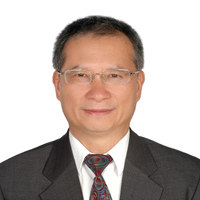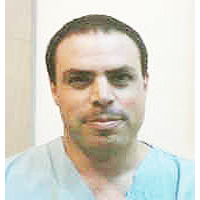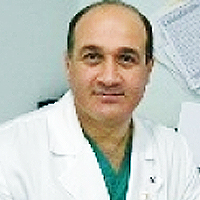Abstract
Research Article
Antimicrobial, Antioxidant Activity of Ethyl Acetate Extract of Streptomyces sp. PERM2, its Potential Modes of Action and Bioactive Compounds
Peguy Flora Djuidje Kouomou*, Esperanza Ghomsi Guiadem, Maurice Fotsing Tagatsing, Wong Mui-Yong, Carole Beaulieu, Cecile Annie Ewane and Thaddee Boudjeko
Published: 18 November, 2024 | Volume 8 - Issue 3 | Pages: 134-145
Background: Microorganisms belonging to Streptomyces sp. are Gram-positive bacteria known for their unsurpassed capacity for the production of secondary metabolites with diverse biological activities. The aim of this study was to evaluate the antimicrobial and antioxidant properties of ethyl acetate Streptomyces sp. PERM2 extract, its potential modes of action and bioactive secondary metabolites.
Results: The ethyl acetate PERM2 extract showed antimicrobial activity more pronounced on both Gram-positive and Gram-negative bacteria and fungi with a Minimum Inhibitory Concentration value (MIC) of 0.5 mg/mL and Minimum Bactericidal Concentration (MBC) of 2 - 4 mg/mL against bacterial pathogens. MIC value against pathogenic fungi was 2 mg/mL and Minimum Fungicidal Concentration (MFC) of 0.01 - 0.05 mg/mL against pathogenic fungi. PERM2 crude extract showed the ability to inhibit bacteria cell wall synthesis at 0.5 and 1 MIC. The extract was found to possess dose-dependent 2,2-Diphenyl-picrylhadrazyl (DPPH) free radical scavenging and Ferric reducing activity. The gas chromatography-mass spectrometry (GC-MS) analysis revealed the presence of three major compounds identified as 9,12-octadecadienoic acid (Z, Z) (29.75%), tridecyl trifluoroacetate (24.82%) and 1-(+)-ascorbic acid 2, 6-dihexadecanoate (22.34%). The liquid chromatography-tandem mass spectrometry (LC-MS/MS) analysis revealed the presence of 22 non-volatile metabolites in PERM2 extract and only the compound 3, 30-O-dimethylellagic acid was identified.
Conclusion: The results of this study indicate that ethyl acetate Streptomyces sp. PERM2 extract possesses antibacterial, antifungal, and antioxidant activities; inhibits bacteria cell wall and protein synthesis; and contains significant bioactive secondary metabolites which could be used as an alternative to multi-resistance antibiotics.
Read Full Article HTML DOI: 10.29328/journal.acr.1001113 Cite this Article Read Full Article PDF
Keywords:
Streptomyces sp. PERM2; Ethyl acetate extract; Antimicrobial; Modes of action; Antioxidant; GC-MS; LC-MS/MS; Bioactive secondary metabolites
References
- Naine J, Srinivasan MV, Devi SC. Novel anticancer compounds from marine actinomycetes: A review. J Pharm Res. 2011; 4 (4): 1285–1287. Available from: https://agris.fao.org/search/en/providers/122415/records/647368c62c1d629bc9806d70
- Kumari S, Upadhayay D, Andhare P, Prajapati P. Microbial secondary metabolites. IJBPAS. 2021; 10(4): 488–496. Available from: https://doi.org/10.31032/IJBPAS/2021/10.4.1056
- Taechowisan T, Chaisaeng S, Phutdhawong WS. Antibacterial, antioxidant and anticancer activities of biphenyls from Streptomyces BO-07: an endophyte in Boesenbergia rotunda (L.) Mansf A. Food Agri Immunol. 2017; 28: 13301–346. Available from: https://doi.org/10.1080/09540105.2017.1339669
- Araujo-Melo R, Oliveira TH, Oliveira CVJ, Araújo JM, Sena KXRF, Coelho LCBB. Actinobacteria: A Renewable Source of Bioactive Molecules with Medical, Industrial and Pharmacological Importance. Advances T. Biotechnol Gen. 2019; 1: 62– Available from: https://www.researchgate.net/profile/A-M-Al-Naggar/publication/339227745_e-book-Advances_and_Trends_in_Biotechnology_and_Genetics_Vol1/links/5e44a75492851c7f7f340f59/e-book-Advances-and-Trends-in-Biotechnology-and-Genetics-Vol1.pdf#page=71
- Simeis D, Serra S. Actinomycetes: A Never-Ending Source of Bioactive Compounds—An Overview on Antibiotics Production. Antibio. 2021; 10 (483): 1– https://doi.org/10.3390/antibiotics10050483
- Cyske Z, Jaroszewicz W, Żabińska M, Lorenc P, Sochocka M, Bielańska P, et al. Unexplored potential: Biologically active compounds produced by microorganisms from hard-to-reach environments and their applications. Acta Biochima Polonica. 2021; 68 (40): 565–574. Available from: https://doi.org/10.18388/abp.2020_5887
- Tischler D, van Berkel WJH, Fraaije MW. Editorial:Actinobacteria, a Source of Biocatalytic Tools. Front. Microbiol. 2019; 10 (800): 1–4. Available from: https://doi.org/10.3389/fmicb.2019.00800
- Li Q, Chen X, Jiang Y, Jiang C. Morphological Identification of Actinobacteria. Chapter 3. 2016; 60p. Available from: http://doi.org/10.5772/61461
- Qin S, Li W-J, Klenk H-P , Hozzein WN, Ahmed I. Editorial: Actinobacteria in Special and Extreme Habitats: Diversity, Function Roles and Environmental Adaptations, Second Edition. Front. Microbiol. 2019; 10(944):1–3. Available from: https://doi.org/10.3389/fmicb.2019.00944
- Lee L-H, Goh B-H, Chan K-G. Editorial: Actinobacteria: Prolific Producers of Bioactive Metabolites. Front Microbiol. 2020; 11 (1612): 1– Available from https://doi.org/10.3389/fmicb.2020.01612
- De Simeis, Serra S. Actinomycetes: A Never-Ending Source of Bioactive Compounds—An Overview on Antibiotics Production. Antibiotics. 2021; 10 (483): 1–32. Available from: https://doi.org/10.3390/antibiotics10050483
- Miao V, Davies J. Actinobacteria: The good, the bad and the ugly. Anton Van Leeuwen. 2010; 98 (2): 143–150. Available from: https://doi.org/1007/s10482-010-9440-6
- David B, Wolfender JL, Dias DA. The pharmaceutical industry and natural products: historical status and new trends. Phytochem Rev. 2014; 14: 299–315. Available from: https://link.springer.com/article/10.1007/s11101-014-9367-z
- Stach JEM, Maldonado LA, Ward AC, Goodfellow M, Bull AT. New primers specific for actinobacteria: application to marine and terrestrial environments. Environ Microbiol. 2003; 5(10): 828–841. Available from: http://dx.doi.org/10.1046/j.1462-2920.2003.00483.x
- Goodfellow M, Fiedler HP. A guide to successful bioprospecting: informed by actinobacterial systematics. Anton Van Leeuwen. 2010; 98(2):1194–142. Available from: https://link.springer.com/article/10.1007/s10482-010-9460-2
- Subramani R, Aalbersberg W. Marine Actinomycetes: an ongoing source of novel bioactive metabolites. Microbiol Res. 2012; 167(10): 571–580. Available from: https://doi.org/10.1016/j.micres.2012.06.005
- Kim YM, Farrah S, Baney RH. Structure antimicrobial activity relationship for silanols, a new class of disinfectants, compared with alcohols and phenols. Int J Antimicrob Agents. 2007; 29(2): 217–222. Available from: https://doi.org/10.1016/j.ijantimicag.2006.08.036
- Saurav K, Kannabiran K. Cytotoxicity and antioxidant activity of 5-(2, 4-dimethylbenzyl) pyrrolidin-2-one extracted from marine Streptomyces VITSVK5 spp. Saudi. J Biol Sci. 2012; 19(1):81–6. Available from: https://doi.org/10.1016/j.sjbs.2011.07.003
- Wang Y, Chang L, Zhao X, Meng X, Liu Y. Gas chromatography-mass spectrometry analysis on compounds in volatile oils extracted from Yuanzhi (Radix polygalae) and Shichang pu (Acorus tatarinowii) by Supercritical CO2. J Trad Chinese Medi. 2012; 32(3): 4594–64. Available from: https://doi.org/10.1016/s0254-6272(13)60055-2
- Ser H-L, Palanisamy UD, Yin W-F, Malek A, Nurestri S, Chan K-G. Presence of antioxidative agent, Pyrrolo [1,2a] pyrazine-1,4-dione, hexahydro-in newly isolated Streptomyces mangrovisoli sp. nov. Front Microbiol. 2015; 6 (854):1-16. Available from: https://doi.org/10.3389/fmicb.2015.00854
- Kumar PS, Duraipandiyan V, Ignacimuthu S. Isolation, screening and partial purification of antimicrobial antibiotics from soil Streptomyces sp. SCA 7. Kaohsing J Med Sci. 2014; 30(9): 435–446.Available from: https://doi.org/10.1016/j.kjms.2014.05.006
- Nagaseshu P, Gayatridevi V, Anil KB, Seema K, Murali MG, Rama RM. Antioxidant and antiproliferative potentials of marine actinomycetes. Int J Pharmacy Pharma Sci. 2016; 8 (8): 277–284. Available from: https://www.researchgate.net/publication/307325638_Antioxidant_and_antiproliferative_potentials_of_marine_actinomycetes
- Djuidje KPF, Ewane CA, Lerat S, Omokolo ND, Beaulieu C, Boudjeko T. Evaluation of antagonistic activities against Pythium myriotylum and plant growth promoting traits of Streptomyces isolated from Cocoyam (Xanthosoma sagittifolium (L.) Schott) rhizosphere. J. Crop Sci. 2019; 13(06): 920–933. Available from: https://www.cabidigitallibrary.org/doi/pdf/10.5555/20203264658
- Djuidje KPF, Asultan W, Beaulieu C, Wong MY, Boudjeko T. Characterization of endophytic Streptomyces strains from roots of cocoyam (Xanthosoma sagittifolium L. Schott) in the South west region of Cameroon, their in vitro plant growth promoting abilities and biocontrol efficacy against Pythium myriotylum. SAJB. 2021; 144 (2022):1451–55. Available from: http://dx.doi.org/10.1016/j.sajb.2021.08.018
- Zhao H, Song Z, Cowins JV, Olubajo O. Microwave-Assisted Esterification of N-Acetyl-L-Phenylalanine Using Modified Mukaiyama’s Reagents: A New Approach Involving Ionic Liquids. Int J Mol Sci. 2008; 9 (1): 33–44. Available from: https://doi.org/10.3390/ijms9010033
- Cockerill FR, Wilker MA, Alder J, Dudley MN, Eliopoulos GM, Ferraro M, et al. Methods for dilution antimicrobial susceptibility tests for bacteria that grow aerobically: approved standard. Clinical and Laboratory Standard Institute (CLSI), Wayne, PA. MO7-A9. 2012; 32 (2):16–8. Available from: https://doi.org/10.1128/AAC.00619-16
- Soares FCA, Soussa SDA, Garrido SDM, Perez OJ, Almeida DSM. Soils streptomyces with in vitro activity against the yam’s pathogens Curvularia Eragrostides and Colletotrichum Gloleosporiodes. Braz J Microbiol 2006; 37(4): 456–461. Available from: https://doi.org/10.1590/S1517-83822006000400010
- Selvameenal L, Radhakrishnan M, Balagurunathan Antibiotic pigment from desert soil actinomycetes; biological activity, purification and chemical screening. Indian J Pharma Sci. 2009; 71(5):4995–04. Available from: https://doi.org/10.4103/0250-474x.58174
- Rangseekaew P, Pathom-aree W. Cave Actinobacteria as Producers of Bioactive Metabolites. Front. Microbiol. 2019; 10 (387):1-11. Available from: https://doi.org/10.3389/fmicb.2019.00387
- Awla HK, Kadir J, Othman R, Rashid TS, Wong MY. Bioactive compounds produced by Streptomyces sp. isolate UPMRS4 and antifungal activity against Pyricularia oryzae. Amer J Plant Sci. 2016; 7 (7):10771–085. Available from: https://www.scirp.org/journal/paperinformation?paperid=66540
- National Committee for Clinical Laboratory Standards. Methods for dilution antimicrobial susceptibility tests for bacteria that grow aerobically. Approved standard M7-A5. National Committee for Clinical Laboratory Standards, Wayne, PA, USA. 2000.
- Upadhyay RK, Ahmad S, Jaiswal G, Dwivedi P, Tripathi R. Antimicrobial effects of Cleome viscosa and Tigonella foenum graecum seed extracts. Cell Tissue Res. 2008. 8(2); 1355-1360. Available from: https://www.tcrjournals.com/uploads/986823._Upadhyay.pdf
- Sharma P, Kalita MC, Thakur D. Broad spectrum antimicrobial activity of forest derived soil actinomycete, Norcardia sp. PB-52. Front Microbiol. 2016; 8 (2):68. Available from: https://www.frontiersin.org/journals/microbiology/articles/10.3389/fmicb.2016.00347/full
- Devi CS, Kumari A, Jain N, Naine SJ, Mohanasrinivasan VM. Screening of actinomycetes isolated from soil samples for antibacterial and antioxidant activity. Int J Pharmacy Pharma Sci. 2013; 5 (4): 483–489. Available from: https://www.researchgate.net/publication/263200129_Screening_of_actinomycetes_isolated_from_soil_samples_for_antibacterial_and_antioxidant_activity
- Limsuwan S and Voravuthikunchai SP. Anti-Streptococcus pyogenes Activity of selected Medicinal Plant Extracts Used in Thai Traditional Medicine. Tropical J Pharma Res. 2013, 12(4): 535– Available from: http://dx.doi.org/10.4314/tjpr.v12i4.14
- Janardhan A, Kumar PA, Viswanath B, Saigopal DVR, Narasimha G. Production of bioactive compounds by actinomycetes and their antioxidant properties. Biotech Res Int. 2014 (1); 217030–217038. Available from: https://doi.org/10.1155/2014/217030
- Zothanpuia1, Passari AK, Chandra P, Leo VV, Mishra VK, Kumar B, et al. Production of potential antimicrobial compounds from Streptomyces cyaneofusctus associated with fresh water sediment. Front Microbiol. 2017; 8(68): 1– Available from: https://www.frontiersin.org/journals/microbiology/articles/10.3389/fmicb.2017.00068/full
- Jose PA, Maharshi A, Jha B. Actinobacteria in natural products research: Progress and prospects. Microbiol Res.2021; 246: 1– Available from: https://doi.org/10.1016/j.micres.2021.126708
- Ezeokoli OT, Bezuidenhout CC, Maboeta MS, Khasa DP, Adeleke RA. Structural and functional diferentiation of bacterial communities in post-coal mining reclamation soils of South Africa: bioindicators of soil ecosystem restoration. Scientific Reports. 2020; 10 (1759): 1–14. Available from: https://doi.org/10.1038/s41598-020-58576-5
- Atassi G, Medernach R, Scheeetz M, Nozick S, Rhodes NJ, Murphy-Belcaster M, et al. Genomics of Aminoglycoside Resistance in Pseudomonas aeruginosa Bloodstream Infections at a United States Academic Hospital. Microbiol Spectrum. 2023; 11(3): 1–13. Available from: https://doi.org/10.1128/spectrum.05087-22
- Rammali S, Hilali L, Dari K, Bencharki B, Rahim A, Timinouni M, et al. Antimicrobial and antioxidant activities of Streptomyces species from soils of three different cold sites in the Fez‑Meknes region Morocco. Scient Reports. 2022; 12(17233): 1–22. Available from: https://doi.org/10.1038/s41598-022-21644-z
- Anavadiya B, Chouhan S, Saraf M, Goswami D. Exploring endophytic actinomycetes: A rich reservoir of diverse antimicrobial compounds for combatting global antimicrobial resistance. The microbe.2024; 4(100110):1–17. Available from: https://doi.org/10.1016/j.microb.2024.100110
- Weslati I, Simões L, Teixeira A, Parpot P, Raies A, Oliveira R. Antibacterial and antioxidant activities of Streptomyces strain FR7 isolated from forest soil. Let Appl Microbiol. 2023; 76(4), 1–11. Available from: https://doi.org/10.1093/lambio/ovad036
- Kurnianto MA, Kusumaningrum HD, Lioe HN, Chasanah E. Antibacterial and antioxidant potential of ethyl acetate extract from Streptomyces AIA12 and AIA17 isolated from gut of Chanos chanos. Biodiversita. 2021; 22(8):3196–3206. Available from: https://smujo.id/biodiv/article/view/8580
- Oliveira THB, Gusmão NB, Da Silva Lao, Coelho LCBB. Free Radicals and Actinobacteria as a Misexplored Goldmine of Antioxidant Compounds. An Acad Bras Cienc. 2021; 93(3): 1–23. Available from: https://doi.org/10.1590/0001-3765202120201925
- Mueller EA, Levin Bacterial Cell Wall Quality Control during Environmental Stress. Molecular Biol Physiol.2020. 11(5):1–15. Available from: https://doi.org/10.1128/mbio.02456-20
- Lin J, Zhou D, Steitz TA, Polikanov YS, Gagnon MG. Ribosome-Targeting Antibiotics: Modes of Action, Mechanisms of Resistance, and Implications for Drug Design. Annu Rev Biochem. 2018; 87: 451–478. Available from: https://doi.org/10.1146/annurev-biochem-062917-011942
- Pardoa L, Machadoa V, Cuelloa D, Aguerreberea P, Seija V, Bragaa V, et al. Macrolide-lincosamide-streptogramin B resistance phenotypes and their associated genotypes in Staphylococcus aureus isolates from a tertiary level public hospital of Uruguay. Rev Argent Microbiol. 2020;52(3):202–210. Available from: https://doi.org/10.1016/j.ram.2019.10.004
- Li Q, Pellegrino J, Lee DJ, Tran A, Wang R, Park J, et al. Synthesis and Mechanism of Action of Group a Streptogramin Antibiotics That Overcome Resistance. 2019; ChemRxiv. 1–335. Available from: https://chemrxiv.org/engage/chemrxiv/article-details/60c742af337d6c2650e26ab4
- Singh SP, Quresh A, Hassan W. Mechanisms of Action by Antimicrobial Agents: A Review. M.J.M. 2021; 19(4): 1–10. Available from: https://doi.org/10.26443/mjm.v19i1.217
- Urban-Chmiel R, Marek A, Stępień-Pyśniak D, Wieczorek K, Dec M, Nowaczek A, et al. Antibiotic resistance in bacteria-A Review. Antibiotics. 2022; 11(8). Available from: https://doi.org/10.3390/antibiotics11081079
- Staudacher M, Hotz JF, Kriz R, Schefberger K, Schneider L, Spettel K, et al. Differences in oxazolidinone resistance mechanisms and small colony variants emergence of Staphylococcus aureus induced in an in vitro resistance development model. 2024; Emerging M. Inf. 13 (2292077): 1–8. Available from: https://doi.org/10.1080/22221751.2023.2292077
- Elfadadny A, Ragab RF, AlHarbi M, Badshah F, Ibáñez-Arancibia E, Farag A, et al. Antimicrobial resistance of Pseudomonas aeruginosa: navigating clinical impacts, current resistance trends, and innovations in breaking therapies. Front Microbiol. 2024; 15 (:1374466): 1–Available from: https://doi.org/10.3389/fmicb.2024.1374466
- Brito MV, Fonseca WL, Mafezoli J, Barbosa FG, Nunes FM, Mattos MC, et al. Volatile organic compounds (VOCs) produced by the rhizosphere actinobacteria 6 Streptomyces and Amycolatopsis sp. strains and their antifungal activity against Colletotrichum musae. Research square. 2021; Available from: https://doi.org/10.21203/rs.3.rs-509649/v1
- Shahidi F, Ambigaipalan P. Omega-3 polyunsaturated fatty acids and their health benefits. Ann Rev Food Sci Technol. 2018; 25(9): 345–381. Available from: https://doi.org/10.1146/annurev-food-111317-095850
- Banik S, Hossain MS. A comparative overview on good fats and bad fats: guide to control healthy body. Inter J Health. 2014; 2(2): 41–44. Available from: https://doi.org/10.14419/ijh.v2i2.2903
- Shahidi F, Ambigaipalan P. Omega-3 Polyunsaturated Fatty Acids and Their Health Benefits. Annu Rev Food Sci Technol. 2018; 9 (16):345–381. Available from: https://doi.org/10.1146/annurev-food-111317-095850
- Sanni DM, Omotoyinbo OV. GC-MS analysis of Pteleopsissuberosa stem bark methanol-chloroform extract. J Plant Sci 2016; 4(3): 37–40. Available from: http://dx.doi.org/10.11648/j.jps.20160403.11
- Gadhi AAA, El-Sherbiny MMO, Al-Sofyani AMA, Ba-Akdah MA, Satheesh S. Antibiofilm activities of extracts of the macroalga halimeda from the red sea. J Marine Sci Technol. 2018; 26(6): 838–846. Available from: https://jmstt.ntou.edu.tw/journal/vol26/iss6/8/
- Okwu DE, Ighodaro BU. GC-MS Evaluation of Bioactive Compounds and Antibacterial Activity of the Oil Fraction from the Leaves of Alstonia boonei De Wild Der Pharma Chem. 2010; 2: 261–272. Available from: https://www.derpharmachemica.com/abstract/gcms-evaluation-of-bioactive-compounds-and-antibacterial-activity-of-the-oil-fraction-from-the-leaves-of-alstonia-boonei-3285.html
- Ralte L, Khiangte L, Thangjam NM, Kumar A, Singh YT. GC–MS and molecular docking analyses of phytochemicals from the underutilized plant, Parkia timoriana revealed candidate anti‑cancerous and anti‑infammatory agents. Scientific Reports. 2022; 12 (3395):1–Available from: https://www.nature.com/articles/s41598-022-07320-2
- Igwe OU, Okwunodulu UF. Investigation of Bioactive Phytochemical Compounds from the Chloroform extract of the leaves of Pyllanthus amarus by GC-MS technique. IJCPS. 2014; 2(1): 554-560. Available from: https://www.researchgate.net/publication/281776251_Investigation_of_Bioactive_Phytochemical_Compounds_from_the_Chloroform_Extract_of_the_Leaves_of_Phyllanthus_amarus_by_GC-MS_Technique
- Mathavi P, Nethaji S, Velavan. GC-MS Analysis of phytocomponents in the methanolic extract of Shorea Robusta. Int J Sci Research. 2015; 4(6):1935–
- Almuhayawi MS, Mohamed MSM, Abdel-Mawgoud M, Selim S, Jaouni SKAI, AbdElgawad H. Bioactive Potential of Several Actinobacteria Isolated from Microbiologically Barely Explored Desert Habitat, Saudi Arabia. Biology. 2021; 10 (235): 1–35. Available from: https://doi.org/10.3390/biology10030235
- Araújo FF, Farias DF, Neri-Numa IA, Pastore GM. Polyphenols and their applications: An approach in food chemistry and innovation potential. Food Chem. 2021; 338: 1–15. Available from: https://doi.org/10.1016/j.foodchem.2020.127535
Figures:

Figure 1

Figure 2

Figure 3
Similar Articles
-
Antimicrobial, Antioxidant Activity of Ethyl Acetate Extract of Streptomyces sp. PERM2, its Potential Modes of Action and Bioactive CompoundsPeguy Flora Djuidje Kouomou*,Esperanza Ghomsi Guiadem,Maurice Fotsing Tagatsing,Wong Mui-Yong,Carole Beaulieu,Cecile Annie Ewane,Thaddee Boudjeko. Antimicrobial, Antioxidant Activity of Ethyl Acetate Extract of Streptomyces sp. PERM2, its Potential Modes of Action and Bioactive Compounds. . 2024 doi: 10.29328/journal.acr.1001113; 8: 134-145
Recently Viewed
-
Synthesis of Carbon Nano Fiber from Organic Waste and Activation of its Surface AreaHimanshu Narayan*,Brijesh Gaud,Amrita Singh,Sandesh Jaybhaye. Synthesis of Carbon Nano Fiber from Organic Waste and Activation of its Surface Area. Int J Phys Res Appl. 2019: doi: 10.29328/journal.ijpra.1001017; 2: 056-059
-
Obesity Surgery in SpainAniceto Baltasar*. Obesity Surgery in Spain. New Insights Obes Gene Beyond. 2020: doi: 10.29328/journal.niogb.1001013; 4: 013-021
-
Tamsulosin and Dementia in old age: Is there any relationship?Irami Araújo-Filho*,Rebecca Renata Lapenda do Monte,Karina de Andrade Vidal Costa,Amália Cinthia Meneses Rêgo. Tamsulosin and Dementia in old age: Is there any relationship?. J Neurosci Neurol Disord. 2019: doi: 10.29328/journal.jnnd.1001025; 3: 145-147
-
Case Report: Intussusception in an Infant with Respiratory Syncytial Virus (RSV) Infection and Post-Operative Wound DehiscenceLamin Makalo*,Orlianys Ruiz Perez,Benjamin Martin,Cherno S Jallow,Momodou Lamin Jobarteh,Alagie Baldeh,Abdul Malik Fye,Fatoumatta Jitteh,Isatou Bah. Case Report: Intussusception in an Infant with Respiratory Syncytial Virus (RSV) Infection and Post-Operative Wound Dehiscence. J Community Med Health Solut. 2025: doi: 10.29328/journal.jcmhs.1001051; 6: 001-004
-
The prevalence and risk factors of chronic kidney disease among type 2 diabetes mellitus follow-up patients at Debre Berhan Referral Hospital, Central EthiopiaGetaneh Baye Mulu,Worku Misganew Kebede,Fetene Nigussie Tarekegn,Abayneh Shewangzaw Engida,Migbaru Endawoke Tiruye,Mulat Mossie Menalu,Yalew Mossie,Wubshet Teshome,Bantalem Tilaye Atinafu*. The prevalence and risk factors of chronic kidney disease among type 2 diabetes mellitus follow-up patients at Debre Berhan Referral Hospital, Central Ethiopia. J Clini Nephrol. 2023: doi: 10.29328/journal.jcn.1001104; 7: 025-031
Most Viewed
-
Evaluation of Biostimulants Based on Recovered Protein Hydrolysates from Animal By-products as Plant Growth EnhancersH Pérez-Aguilar*, M Lacruz-Asaro, F Arán-Ais. Evaluation of Biostimulants Based on Recovered Protein Hydrolysates from Animal By-products as Plant Growth Enhancers. J Plant Sci Phytopathol. 2023 doi: 10.29328/journal.jpsp.1001104; 7: 042-047
-
Sinonasal Myxoma Extending into the Orbit in a 4-Year Old: A Case PresentationJulian A Purrinos*, Ramzi Younis. Sinonasal Myxoma Extending into the Orbit in a 4-Year Old: A Case Presentation. Arch Case Rep. 2024 doi: 10.29328/journal.acr.1001099; 8: 075-077
-
Feasibility study of magnetic sensing for detecting single-neuron action potentialsDenis Tonini,Kai Wu,Renata Saha,Jian-Ping Wang*. Feasibility study of magnetic sensing for detecting single-neuron action potentials. Ann Biomed Sci Eng. 2022 doi: 10.29328/journal.abse.1001018; 6: 019-029
-
Pediatric Dysgerminoma: Unveiling a Rare Ovarian TumorFaten Limaiem*, Khalil Saffar, Ahmed Halouani. Pediatric Dysgerminoma: Unveiling a Rare Ovarian Tumor. Arch Case Rep. 2024 doi: 10.29328/journal.acr.1001087; 8: 010-013
-
Physical activity can change the physiological and psychological circumstances during COVID-19 pandemic: A narrative reviewKhashayar Maroufi*. Physical activity can change the physiological and psychological circumstances during COVID-19 pandemic: A narrative review. J Sports Med Ther. 2021 doi: 10.29328/journal.jsmt.1001051; 6: 001-007

HSPI: We're glad you're here. Please click "create a new Query" if you are a new visitor to our website and need further information from us.
If you are already a member of our network and need to keep track of any developments regarding a question you have already submitted, click "take me to my Query."




















































































































































